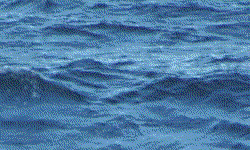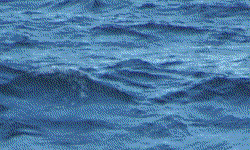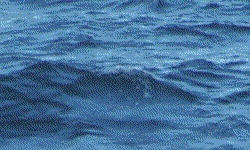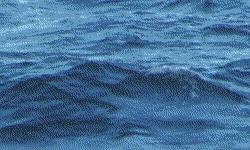
|
|
|
Sea Snake Designs
The sea snake type of wave energy converter typically consists of a series of closed tubes connected in a row, end-to-end (similar to sausage links). These lie flat on the ocean surface, with one end anchored (tethered) to the ocean floor. As swells pass along the length of the machine, the joints (where the sections are connected) flex up and down. This flexing motion is converted to a rotational motion which drives electric generators. The electricity is run down a cable to the ocean floor and then to shore. The shortcoming of the design lies in it's reliance on specific wave lengths.
To get the most out of their machines, sea snake designers build them to match what is surmised to be the most common prevailing wave length in the proposed deployment locale. If that length is deemed to be 60 meters, then the designers will make each section (tube) of their sea snake machine 30 meters long. Figure 1 shows how the machine is flexed as swells pass along its length in seas with the optimal wave length. Figure 2 shows that the machine is flexed only one-third as much if the wave length grows to twice the optimal length. Figure 3 shows that the machine lays almost completely flat if the wave length shrinks to half the optimal length. Although it might seem - particularly in Pstart + � - that the tails of each section would be up (because they are in swells), and the noses would be down (because they are in troughs), it must be remembered that the sections are mechanically connected (pulling vertically on each other) forcing the tails to ride lower in the swells and the noses to ride higher in the troughs. The differences in the amount of flexing are solely due to changes in the wave length. They are completely unrelated to wave period or wave height.
Because sea snake designs are so dependant on wave length for their performance, and wave lengths (as all other wave features) are constantly in flux, they rank low on the comparative efficiency scale. |




